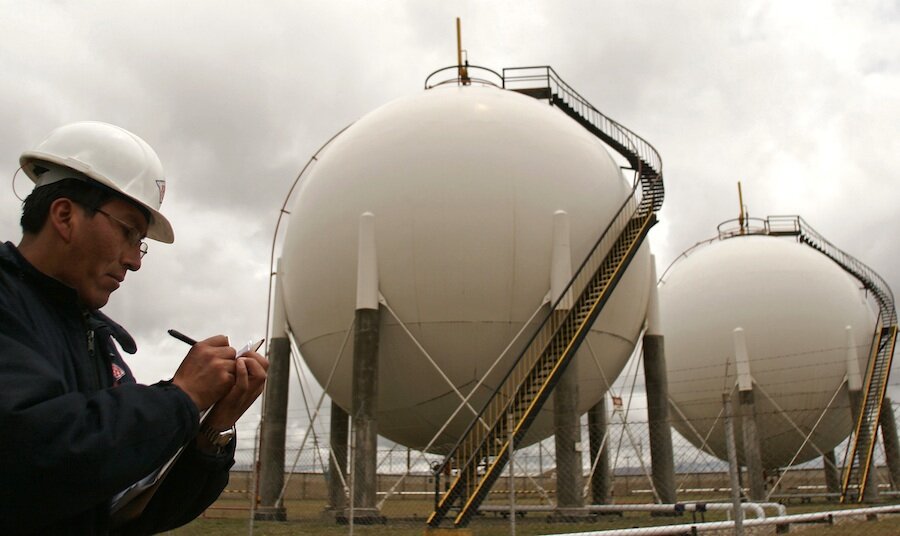Latin America has power to reshape relations with China - but will it use it?
Loading...
| Fortaleza, Brazil
South American nations have a lot of issues to raise with China: questionable labor and environmental practices of Chinese firms in the Andes; unfair trade rules toward major exporters like Brazil; the region’s desire to evolve from a mere commodities supplier to an advanced manufacturing base.
So when Chinese President Xi Jinping makes his first visit to South America this week, he’s likely to face tough questions from hard-bargaining regional leaders, right?
Probably not, says Mauricio Mesquita Moreira, principal trade and integration economist for the Inter-American Development Bank.
“The focus will be more on unity. It will be more political theater than meaningful negotiations on important issues,” Mr. Moreira says.
While observers say that South America has the power to reshape the region’s relationship with China, leaders here are unlikely to address the difficult issues. Amid slowing economic growth in Brazil, the inability of Argentina and others to access international credit, and the desire of Peru and Andean nations to attract investment in infrastructure development, nobody wants to tamper with the Chinese lending spigot.
China deals with Latin America on a country by country basis, though analysts see top economy Brazil as a de facto trade leader for the region. A failure to address the status quo could mean a lost opportunity for Brazilian President Dilma Rousseff to be a key voice on top issues such as trade imbalances, labor rights, and environmental concerns related to Chinese investment across the region. While this is far from Africa, where Chinese companies are often accused of poor environmental practices and labor relations, Latin American leaders still face mounting pressure from civil society to demand higher standards and better trade terms from Beijing.
“The region doesn’t take enough advantage of having so many assets that the Chinese can’t get anywhere else – soy, iron, copper,” says Kevin Gallagher, professor of international relations at Boston University and author of numerous studies on Chinese investment in Latin America. “Latin America could punch above its weight a little more.”
Good a moment as any?
Each step of President Xi’s swing through Latin America is expected to highlight China’s upperhand. His tour begins here in the Brazilian coastal city of Fortaleza for a meeting of the BRICS (Brazil, Russia, India, China, and South Africa). The group of emerging powers is expected to announce a new development bank and currency reserve pool primarily funded by China – underscoring the nation’s outsized influence in the group. The bank will aim to be a global alternative to the World Bank and International Monetary Fund.
After the BRICS summit, Xi is to launch the China-Latin America forum in Brasilia and then visit Argentina and Venezuela – the largest recipients of Chinese financing in all of Latin America and the Caribbean. His last stop will be in Cuba. Xi's visit follows his Latin American and Caribbean trip last year to Mexico, Trinidad and Tobago, and Costa Rica.
China lent $15 billion to the region last year, up four-fold from 2012, though down from $37 billion in 2010, according to the China-Latin America Finance Database. The investment has helped reduce the region’s reliance on the United States and western financial institutions, but some observers and officials worry China's growing sway in the region is creating a new dependency.
“China has already established considerable influence as a top trade partner and financier for many countries in Latin America,” says Margaret Myers, director of the China and Latin America program of the Washington-based think tank Inter-American Dialogue. “But if plans for the BRICS bank and reserve pool are any indication, China isn’t stopping there.”
The growing reliance of Latin America on China is highlighted across financial and trade spheres. Nearly one in 10 exports from Latin America are today sent to China – up from just 2 percent a decade ago, according to the China-Latin America Economic Bulletin. Most exports are in the form of iron, copper, and soy, while in the opposite direction, Chinese electronics and vehicles are flowing into Latin America. A trade imbalance has begun to emerge amid falling prices for commodities, which is hurting Brazilian and Argentine soy farmers and mining firms.
Brazil, for one, has sought to adjust the relationship by boosting domestic manufacturing of value-added products such as processed food and airplanes. But Brazil needs an export market – and for that it wants China to drop restrictions on imports. This isn’t a new issue, says Ms. Myers. China has for years promised to address the region’s trade-related concerns, but fundamental changes in the relationship are unlikely even if Xi pays lip-service to the issue this week. China is not eager to see its own manufacturers priced out by Latin American competitors.
Environmental and labor concerns are also rising, says Mr. Gallagher. Chinese financial institutions operate without the kind of environmental guidelines that regulate the activities of the World Bank, while Chinese firms are unfamiliar with collective bargaining and labor organizing, he says. Just this year, Chinese mining company Chinalco was ordered to halt operations at a Peru mine for illegal dumping of waste water, while China’s state-oil company has come under fire from activists for seeking to drill in the Ecuadorean Amazon.
This would seem a good a moment as any to raise these issues, but the region’s reliance on China as both a major buyer and major financier has given Beijing the upper hand on the subject, says Moreira. Brazil desperately wants Chinese investment to help upgrade its woeful infrastructure system; Argentina is looking for help developing its gigantic Vaca Muerta shale formation; and Venezuela wants to retain Chinese oil investment amid a flailing economy.
Alberto Pfeifer, professor of international relations at the University of São Paulo, sees China’s financing as part of a calculated process of maintaining a supply of agricultural and mining commodities, securing markets for Chinese builders and exporters, and in the long-run exerting political influence across the region.
“China wants everything from Latin America," Mr. Pfeifer says. "Step by step.”








